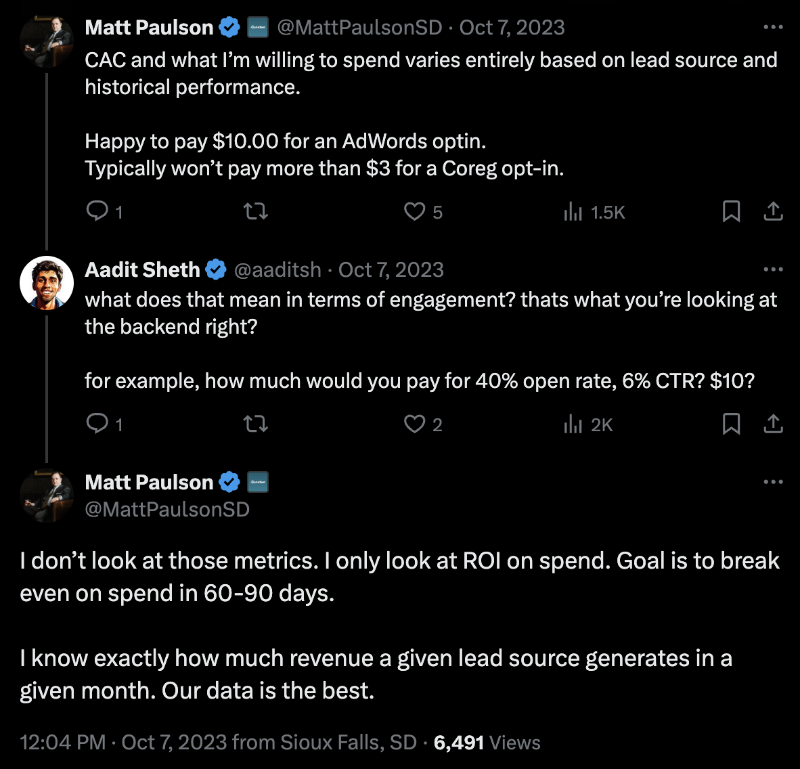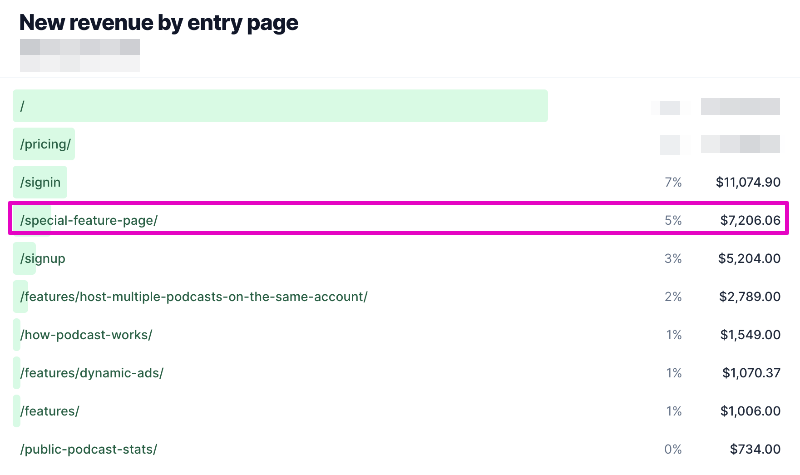Track revenue, not traffic
The problem with marketing metrics is that most of them are meaningless:
How much traffic did we get last month?
How many TikTok views?
How many clicks did we get from our FB ads?
How many YouTube views?
What was our email's open rate?
Founders spend thousands of dollars on marketing activities that produce clicks, traffic, views, and opens – 99% of which don't matter.
In marketing, the only question that matters is, "Which of our efforts are bringing in revenue?"
Matt Paulson, founder of MarketBeat, has grown his company to over $30 million in annual revenue by knowing "exactly how much revenue a given lead source generates in a month."
Traditionally, getting this kind of data has been difficult. Google Analytics, for example, can attach an "approximated revenue value" to events, but it's always felt like guessing.
As a marketer, I've always wanted to see where my revenue came from.
In September, a startup (currently in beta) contacted me and said they could connect my website traffic with Stripe-verified revenue.
Months later, they called me to show me my results, and my jaw hit the floor.
My assumptions about which pages on our website were generating revenue were wrong.
To set the baseline, they showed me website traffic for our site:
I was familiar with these stats. We'd use website traffic to evaluate our content marketing efforts. We'd go after relatively high-traffic keywords for our industry (like: "free intro music for your podcast") with the hope that it would convert into paying customers.
Here's how we were totally wrong:
The startup team showed me the next graph. "How much Stripe revenue has each page on your website earned you in the last X days?" The results made me rethink everything.
It turns out that a low-traffic blog post had earned us significantly more revenue than almost any other page on our website,
This blog post discussed a feature we hadn't touched in years. It's a feature not listed on our homepage, our features index, or anywhere else on our website. Despite this, people searched for this feature on Google, found our blog post, and converted to paid customers.
We'd missed it because we'd assumed that "low traffic = low revenue."
Marketers dream of these funnels: someone needs something, searches for it, and immediately buys it. And we'd been sleeping on it.
Action step: We're now doubling down on this feature and improving it both on the product and marketing sides.
The startup team could also show me revenue by referrer:
Now, there's no guessing if all my efforts on Twitter are directly converting to revenue: I can see it right in the graph.
The graph revealed that two of our industry partners were sending us far more revenue than we had previously thought.
Action step: We're investing in our relationship with these companies and are reaching out to see if there is more co-marketing we could do with them.
It's easy to see a page getting a lot of traffic and think it's helping your business.
We need to stop thinking that "attention" equals "dollars."
We need more of the right kind of attention: customers actively searching for a product they'd like to buy.
Cheers,
Justin Jackson
@mijustin
PS: If you're interested in revenue analytics like this, the startup I talked about is about to hold a paid beta. If you'd like to participate, DM me on Twitter or LinkedIn, and I'll try to connect you!




